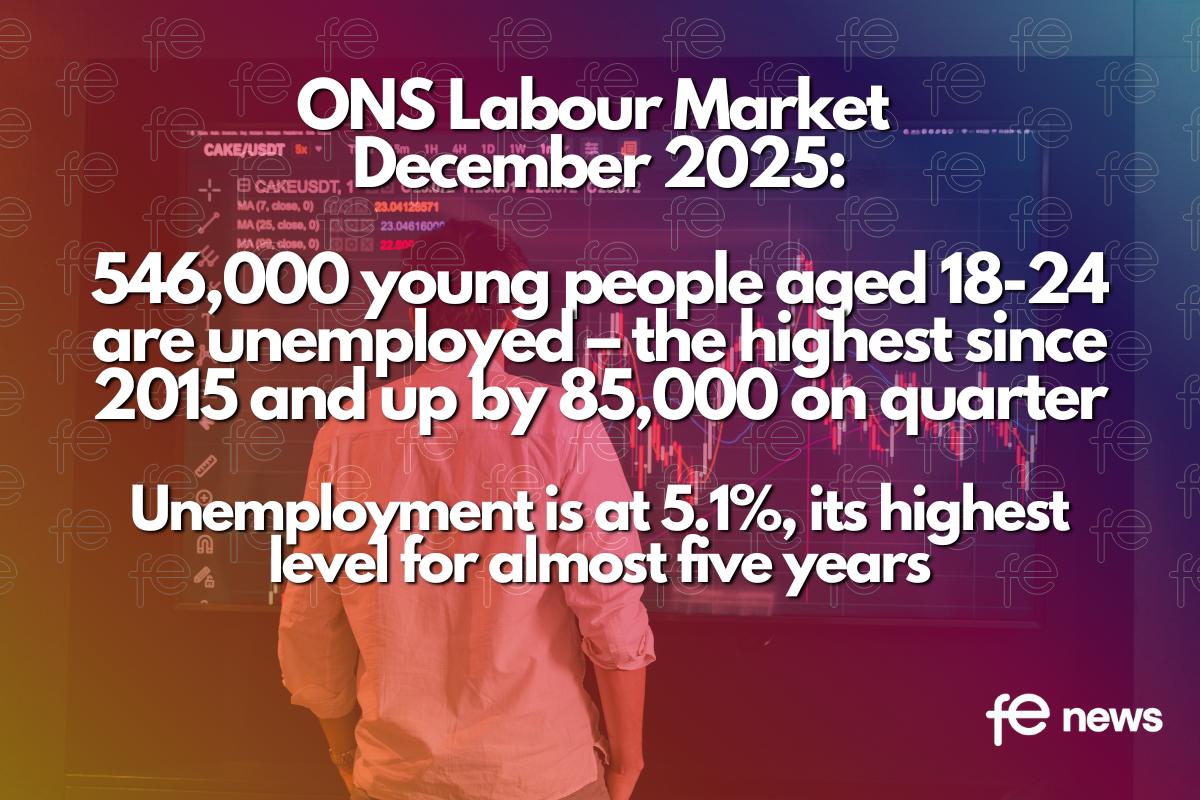The introduction of the levy has diminished the quality of apprenticeships. Part 5

This is part 5 and the final section on the FE News daily analysis of the Reform report on the Apprenticeship Levy.
Now that the apprenticeship levy has completed its first full year of operation, last Friday (13 Apr) Reform published “The Great Training Robbery: assessing the first year of the apprenticeship levy” which reviews the available evidence to determine whether the levy will, as the Government hopes, “incentivise more employers to provide quality apprenticeships” and “transform the lives of young people who secure them”.
The levy itself is, in effect, a tax of 0.5 per cent on the pay bill of organisations with annual wages of over £3 million. These organisations pay their levy contributions into a ‘digital account’ held by HMRC and can then ‘spend’ their contributions on apprenticeship training delivered by registered providers.
Smaller employers can also access the funds generated through the levy, although they must pay a ‘co-investment’ of 10 per cent towards the cost of the training.
The impact of the levy on the quantity of apprenticeships In the six months after the levy was introduced (April – October 2017), the number of people starting an apprenticeship was 162,400 – over 40 per cent lower than the same period in the previous year. A similar downward trend was also evident across November and December.
When the new employer-designed ‘apprenticeship standards’ were originally written and delivered in 2014 and 2015, they were concentrated on younger age groups. Since the levy began operating, the age category with the highest number of people starting to train towards one of the new ‘apprenticeship standards’ is the over-25s instead.
In addition, the mix of apprenticeship levels is shifting away from ‘Intermediate’ (Level 2; equivalent to GCSEs) towards Higher and Degree Apprenticeships (Levels 4-6; equivalent to the first year of university through to a full degree).
From 2016 to 2017 the percentage of apprenticeship starts at Level 2 dropped by 8 per cent. Meanwhile the proportion of apprenticeships delivered at higher levels (Level 4+) has grown markedly since the levy began but just 12 per cent of these higher-level apprenticeships have been provided to those aged under 19.
The changing age profile and the movement towards training at higher levels suggests that more experienced and older workers are increasingly becoming the focus of the apprenticeship programme, at the expense of less experienced and younger employees.
Alongside the levy, the Conservative Party remains committed to its 2015 manifesto pledge that 3 million people will start an apprenticeship between 2015 and 2020. Commentators have consistently raised concerns over this target, and previous similar targets, as they prioritise the quantity of apprenticeships rather than necessarily increasing their quality.
The impact of the levy on the quality of apprenticeships
The introduction of the levy has diminished the quality of apprenticeships. The list of roles now officially counted as an ‘apprenticeship’ includes many low-skill and often very short training courses, all of which can now be delivered using the funds generated by the levy.
These roles include serving customers in a delicatessen or coffee shop, working on a hotel reception desk, performing basic office administration and serving food and drink in a restaurant.
Such training courses do not meet the historical or international definition of an apprenticeship because they typically offer minimal training, represent low-wage jobs and do not constitute skilled occupations.
Employers are also using the levy to rebadge existing training courses as apprenticeships to shift the costs of training onto the Government instead. The most obvious examples of this relabelling are found in leadership and management skills. The list of the most popular apprenticeship standards includes becoming a ‘Team Leader’, ‘Supervisor’ or ‘Manager’.
Cranfield University’s prestigious School of Management has even re-designated its existing Executive MBA as an apprenticeship to attract up to a 90 per cent government subsidy towards the programme costs. Such examples further illustrate how the apprenticeship levy is encouraging employers to prioritise older and more experienced workers instead of improving the recruitment and training of young people in skilled occupations.
Almost 40 per cent of the ‘apprenticeship standards’ approved by the Government since 2012 fail to reach the international or historical definition of an apprenticeship. These mislabelled courses are consuming over 20 per cent of the funding available for newlydesigned apprenticeships.
Without reform, in 2019-20 the Government will spend £600 million on courses incorrectly labelled as apprenticeships, out of the £2.7 billion expected to be raised in that year.
How the levy has affected employers Employers and employers’ groups have become increasingly critical towards the levy since its launch, primarily due to the burdens associated with accessing the levy funds as well as identifying and selecting training and assessment providers.
Surveys of employers have suggested that, instead of increasing the amount of training offered to employees, they were considering cutting their non-apprenticeship training budgets or writing off the levy as a tax and ignoring it.
International evidence from the OECD also indicated that the design of the levy was flawed from the outset. For example, there is no arms-length body or agency to coordinate how the funding will be used and there is the prospect of substantial ‘deadweight’ as companies try to claim levy funds for as many forms of training as possible.
The substantial increase in bureaucracy, plus several other issues, has led business groups to brand the levy ‘disastrous’, ‘confusing’ and ‘broken’.
How the levy has affected providers
The Register of Apprenticeship Training Providers, which lists all the organisations eligible to receive government funding for training apprentices, has been beset by difficulties.
New organisations appeared on this register despite having no track record in delivering apprenticeships or even a set of financial accounts available, and early indications suggest that they could be performing poorly. Meanwhile, some high-performing and established training providers have missed out.
The Register of Assessment Organisations has also struggled to command the respect of stakeholders, with serious concerns being raised about its approach to monitoring the end-point assessments for apprentices and its ability to highlight and address poor-quality provision.
Conclusion
The opening page of the Government-sponsored Richard Review, published in 2012, observed that the growth in apprenticeship numbers in the preceding years had “led us to stretch the definition of what an apprenticeship is too far and, as a consequence, we risk losing sight of the core features of what makes apprenticeships work, what makes them unique.”
Six years on, there is a real danger that the same mistakes could be made all over again. The evidence from the first year of the apprenticeship levy suggests that significant reforms are needed if the Government is to deliver its aim of high-quality apprenticeships for young people at greater volume.
At present, the levy is too complicated for employers, focused on too many inappropriate forms of training and as a result is unlikely to deliver value-for-money.
Reform’s report outlines six significant changes that are required to realise the objectives set out in the Richard Review for funding apprenticeships – namely that the system must be simple, accessible and encourage employers to offer them without asking for greater investment overall:
Recommendation 1: The target for 3 million apprenticeship starts by 2020 should be abandoned so that the focus can be placed on apprenticeship quality above all else.
Recommendation 2: the Government should introduce a new internationallybenchmarked definition of an ‘apprenticeship’ and any apprenticeship standard that does not meet this definition should be withdrawn.
Recommendation 3: the requirement for 10 per cent employer co-investment towards the cost of training apprentices should be removed with immediate effect to avoid employers disengaging from apprenticeships.
Recommendation 4: the Government should replace the existing HMRC digital payment system with a simpler ‘apprenticeship voucher’ model to give employers control of government funding while reducing their administrative burdens.
Recommendation 5: all apprenticeship standards and end-point assessments for apprentices should be assigned a fixed cost by the Education and Skills Funding Agency to remove the need for complicated price and contract negotiations between employers and both training and assessment providers.
Recommendation 6: the exam regulator Ofqual should be made the only option for quality assuring the end-point assessments for apprentices to ensure that standards are maintained over time and poor practice is quickly identified and eradicated.
If these necessary changes are made then apprentices, taxpayers and employers across the country stand to benefit for many years to come.
Tom Richmond, Senior Research Fellow at the Reform Think Tank
About Reform: An independent, non-party, charitable think tank whose mission is to set out a better way to deliver public services and economic prosperity.











Responses